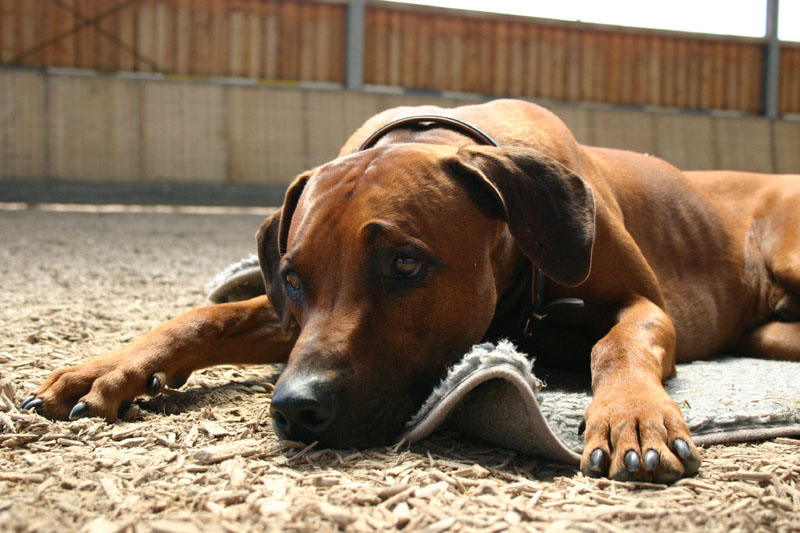 |
| canineambitions.co.uk |
♦ The Value of Meeting Strangers
When dogs meet people other than
their owners—especially children, if there aren’t any in your household—it sets
a good foundation for being comfortable around humans. Puppies should meet men,
women and children, as well as people of a race different from your own. Some
dogs may seem “racist” because they growl or behave otherwise aggressively
toward people who are different from those they’ve been exposed to at the
breeder’s or your house. A dog will do this if he has not met a wide range of
people—and whatever smells or looks unfamiliar will usually bring about a
negative reaction.
Even though the pup hasn’t had all
her vaccinations yet, you can go to a willing “dogless” friend’s house—if they
have a fenced backyard, so much the better—at least until she’s had her second
set of immunizations at nine or ten weeks.
Then, after ten weeks, you can have
friends visit at your house—so much the better if they have immunized, gentle
dogs and/or children (the children should be gentle ones, too—although their
immunizations are not as relevant!). Before ten weeks there is no good reason
to expose your little pup to other dogs, who, even though they themselves may
be healthy and immunized, may have come into contact with ill dogs or bacteria
that could compromise a very young puppy.
♦ New Situation Equals Treats.
Shower the dog with treats when he’s
faced with new people, places or things. Make all experiences fun and positive.
Expose him to lots of friendly humans: give treats while waiting on lines at
shops or banks, and enlist strangers to hand the treats to the dog when
possible.
When at home, keep a stash of tasty
dog treats somewhere near your door (inaccessible to the pooch, of course) and
hand a treat to anyone who comes around—visitors, the mailman, deliverymen,
service people. Ask them to hand it to the puppy so she associates a good treat
with anyone who comes to your house. The puppy should sit first for the
stranger before getting the treat.
♦ Carry a Treat Tube.
Invest in a squeeze tube for cheese
or organic peanut butter and try to keep it close at hand during the
socialization period. These tubes are fabulous ways to give your dog a mouthful
of something heavenly when there is something threatening coming his way—a big
lumbering truck, shopping cart, bicycle, skateboarders, etc. Just open the top
and squeeze a small amount directly into the dog’s mouth—no need to even get
your hands dirty. A treat squeeze tube is an especially useful tool to help
socialize a particularly jumpy, nervous, easily spooked dog. Everything is less
scary when you have a mouthful of peanut butter!
NOTE: Skippy squeezable peanut butter
in a tube sounds like a great quick food reward, but it is not a recommended
food for dogs (it isn’t all that good for kids, either). Peanuts are one of the
most chemically treated crops in America: unless they are grown organically
they are covered with pesticides.
Furthermore, the sugar and salt
content of Skippy and other commercial brands are not good for dogs’ teeth and
digestive systems. They are also fattening and thus a poor choice for
overweight dogs. For dogs with delicate stomachs and tendencies to diarrhea,
peanut butter can act as a laxative.
♦ Borrow Children.
Find a friend who’ll “loan” you a
small child or two—and then give the children bits of cheese to feed the dog.
Accustoming a puppy to children is one of the most important steps in
socializing a pup, because, let’s face it: children are everywhere. And the
problem with kids is that they look, act and sound so different from adults: they
are louder, faster, and higher-pitched and make unpredictable noises and
motions. Some dogs have a really hard time getting used to the little humans,
so the sooner they get started, the better for all concerned.
♦ Make Your Own Puppy Play Group.
If you can’t find any puppy classes
near where you live, or you don’t want to do the legwork of finding an
acceptable puppy kindergarten, you have the option of creating a do-it-yourself
puppy social group. Many professional breeders recognize the importance of
“civilizing” their puppies, but there’s no way they could take eight puppies to
a class. Many of the more dedicated breeders have come up with their own
versions of puppy education, and there’s no reason you can’t follow their lead.
Come up with a plan that gives your puppy a good exposure to a variety of
adults, children and other dogs.
Copyright © Tracie Hotchner – Originally appeared in The Dog Bible: Everything Your Dog Wants You to Know by Tracie Hotchner





.jpg?m=1367459879)








